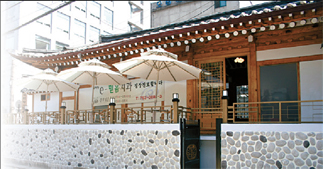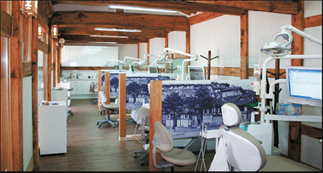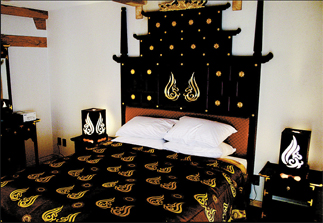Hanok: Making use of Korea’s rich architectural legacy

Korea’s second hanok-style dental clinic opened in Seongbuk-dong, northern Seoul last month. Provided by the hospital.
But the newly opened Trust Dental Clinic in Seongbuk-dong, northern Seoul greets its patients with warm natural timbers, stone steps and a tranquil garden instead. It’s only the second hanok, or traditional Korean structure, to be used as a dental clinic in Korea.
“Believe it or not, it had actually been just a dark, depressing abandoned hanok for the past several years,” Kim Yeong-hwan, the director of the hospital, explained. “It took us six months to renovate this place. We are still working on the garden, which functions as the waiting area for patients.”
Kim, a former science and technology minister, has made it his mission to preserve and promote hanok in Korea. He bought two hanok in the Bukchon area in central Seoul, and opened what he says was the first hanok dental clinic in 2005.

Trust Dental Hospital in Seongbuk [Provided by the hospital]
“It’s heartbreaking to see how hanok today are being replaced by modern high-rise buildings,” Kim lamented. “Surviving hanok usually stand like some kind of dead relic from the past. I wanted to breathe new life into them to make them places where people come and go about their daily business.”
Kim says he’s no architectural expert but thinks hanok, made of stone, wood and soil, have the power to put people into their most natural and comfortable state. That is why he thinks the hanok environment plays a part in helping patients who are normally nervous about dental treatment to relax and endure painful procedures.

La Gung, a hanok-style hotel in Gyeongju, North Gyeongsang
Yu said she particularly enjoyed her hanok experience because she spends most of her time in Toronto, Canada, where her daughter lives.
Going hanok, or adopting elements of traditional architecture, seems to be the current buzz in Korean construction.
The new residential complex Apelbaum in the city of Yongin, Gyeonggi looks modern, but features elements of hanok. Different areas are separated, like the anchae (main building), sarangchae (guest room) and hangrangchae (servants’ quarter) of traditional Korean houses. Halls between those areas have large windows mimicking daecheong-maru, or traditional open spaces where people enjoyed unobstructed natural views and wind as well as easy access to front and rear gardens.
“It’s a modern building with traditional details,” explained Choi Sam-young, president of Kawa Design Group, which designed Apelbaum. “While modern buildings can completely close off the outside, with distinct boundaries between the inner and outer areas, traditional Korean houses were built in perfect harmony with the natural surrounding as if they were part of it.”
Choi also worked with Japanese architect Nobuaki Furuya to design another traditional residence, Dong Yeon Jae, also in Yongin. Dong Yeon Jae was modeled after the traditional Korean house “Hyangdan” built by Lee Eon-jeok (1491-1553), a prominent scholar of the Joseon Dynasty (1392-1910), in Gyeongju, North Gyeongsang. Hyangdan was designated a national treasure in 1964.
“With Korea’s rapid modernization in the 20th century, Koreans quickly adopted Western architecture,” Choi said.
“But it’s actually the traditional architecture that best understands and embraces the country’s geography and climate,” he added. “I’m not saying we should build all our new buildings in hanok style from now on. But it’s important to learn from the wisdom of the traditional architecture and pass it on to future generations.”

A view of the planned changes to Seoul City Hall.[JoongAng Ilbo]
Yoo Kerl, the award-winning architect who designed the new city hall, said the structure will embody more of hanok’s logic and theory than its looks.
“Traditional Korean houses maximize the use of natural resources sun for heating, shade for cooling and wind for ventilation,” Yoo said. “The new city hall will be designed to use all that to minimize the use of air conditioning and heating.”
“Building entirely new hanok is not an easy task. But I welcome recent moves to use existing hanok for various purposes to invite more people to its beauty and wisdom. Like ryokan [traditional Japanese inns] in Japan, which are a major tourist magnet there, I believe we too should make use of our architectural legacy,” Yoo said.
By Kim Hyung-eun Staff Reporter [hkim@joongang.co.kr]










with the Korea JoongAng Daily
To write comments, please log in to one of the accounts.
Standards Board Policy (0/250자)